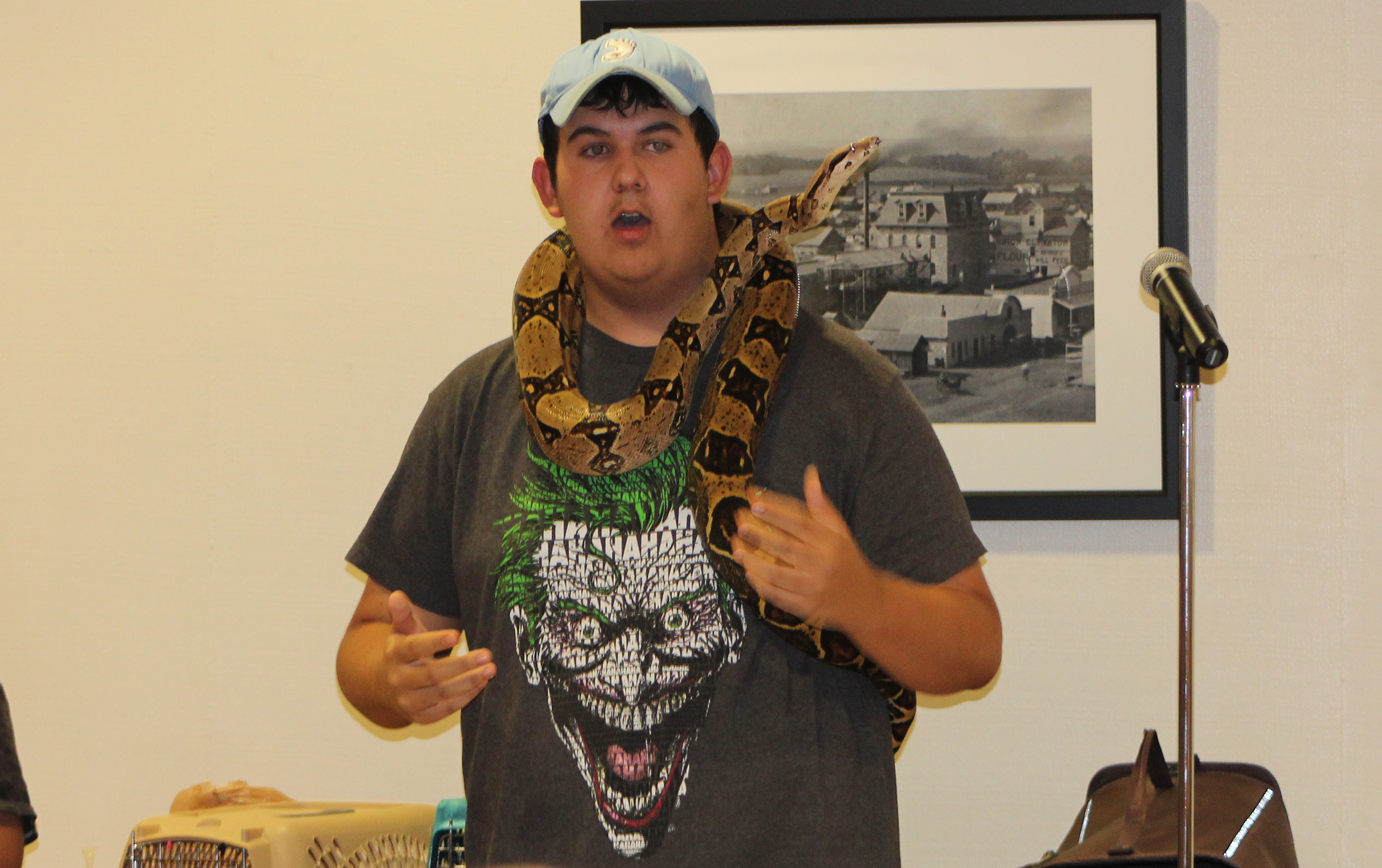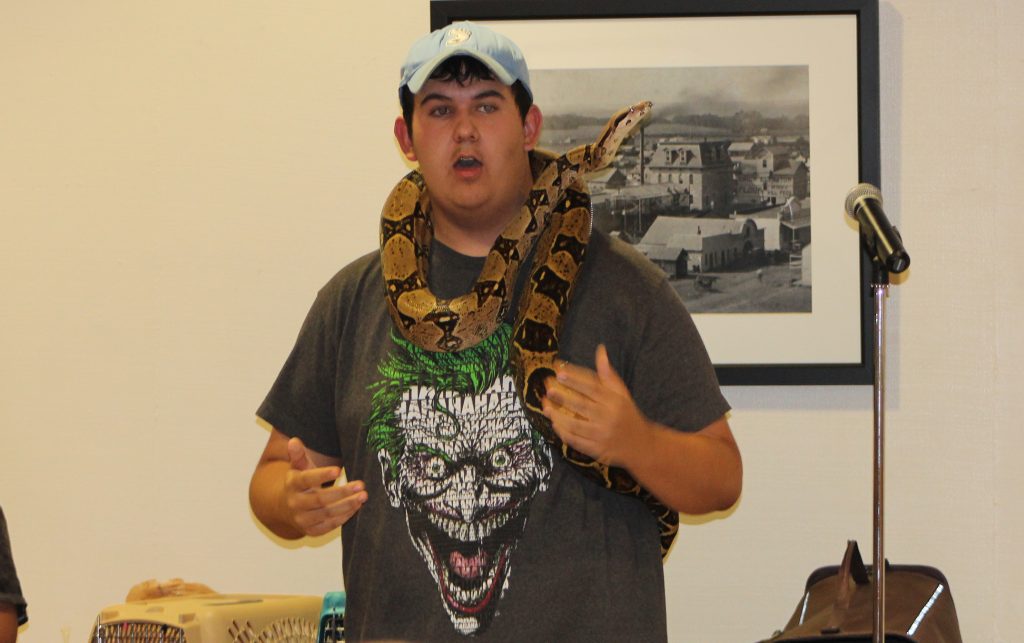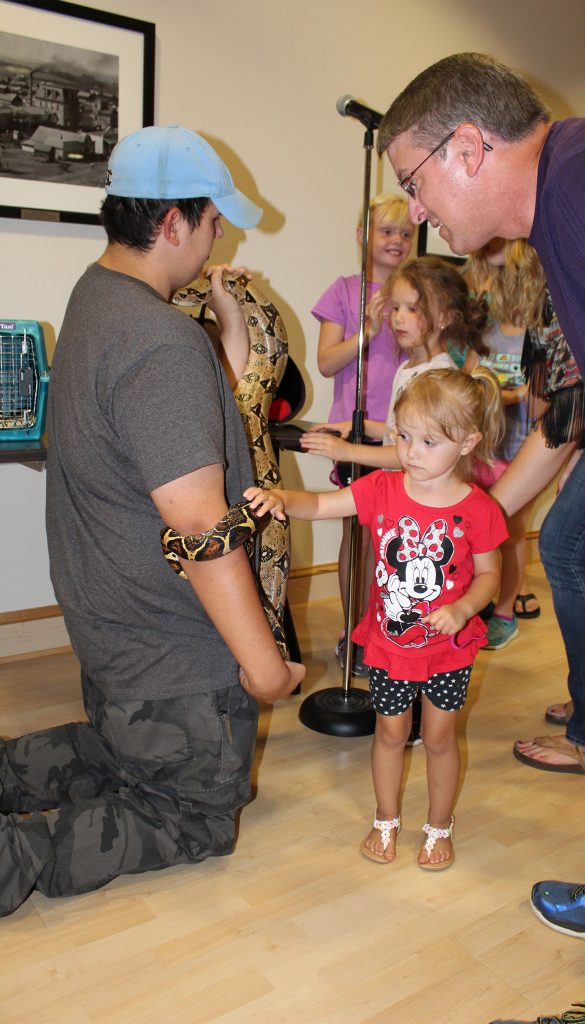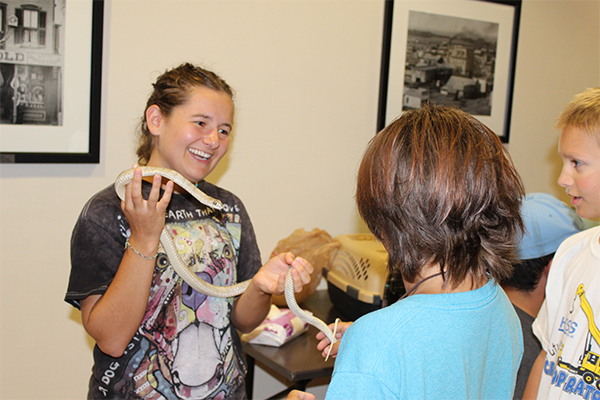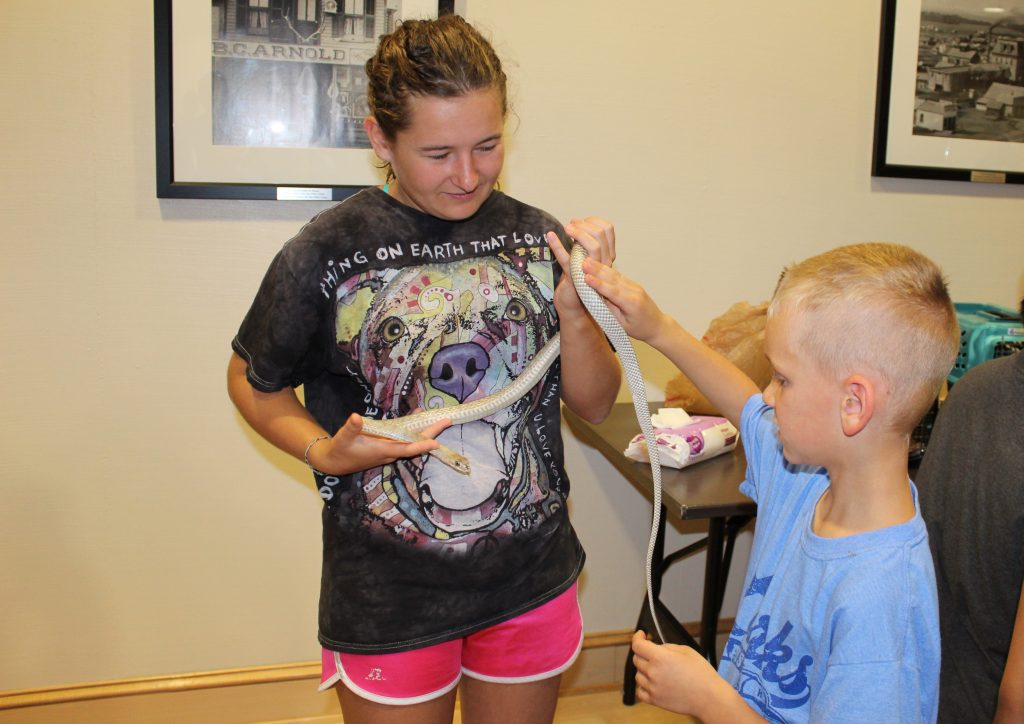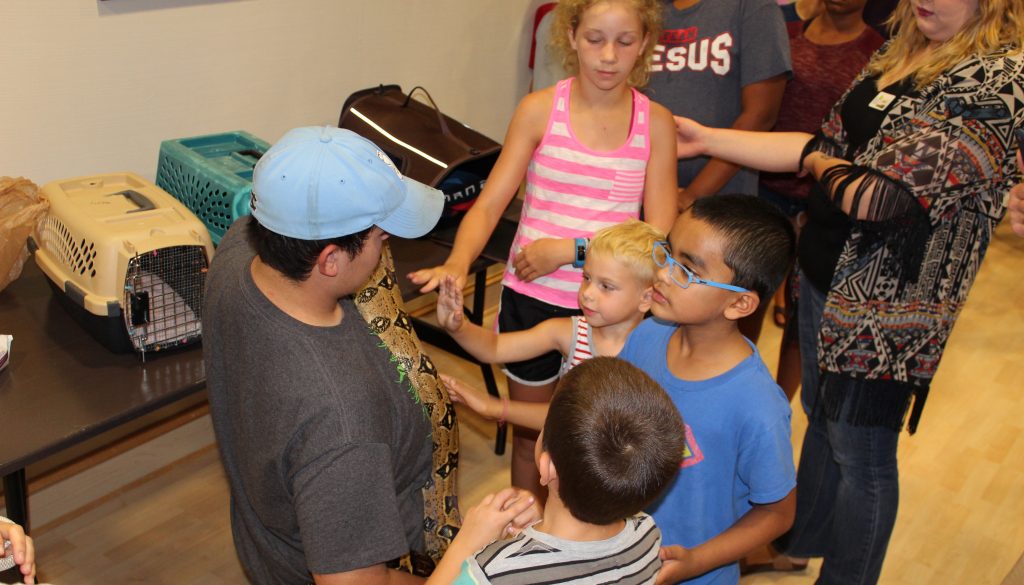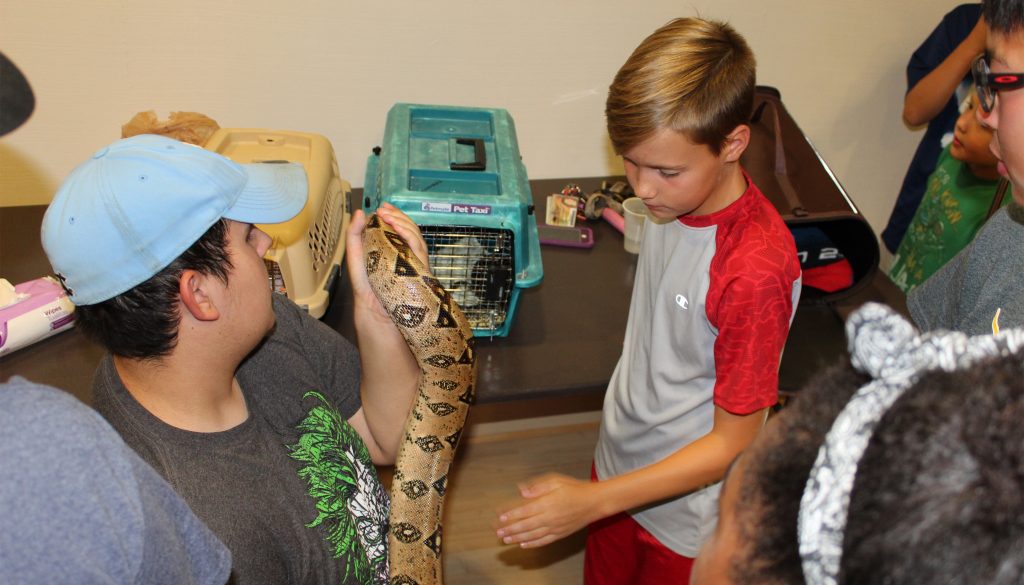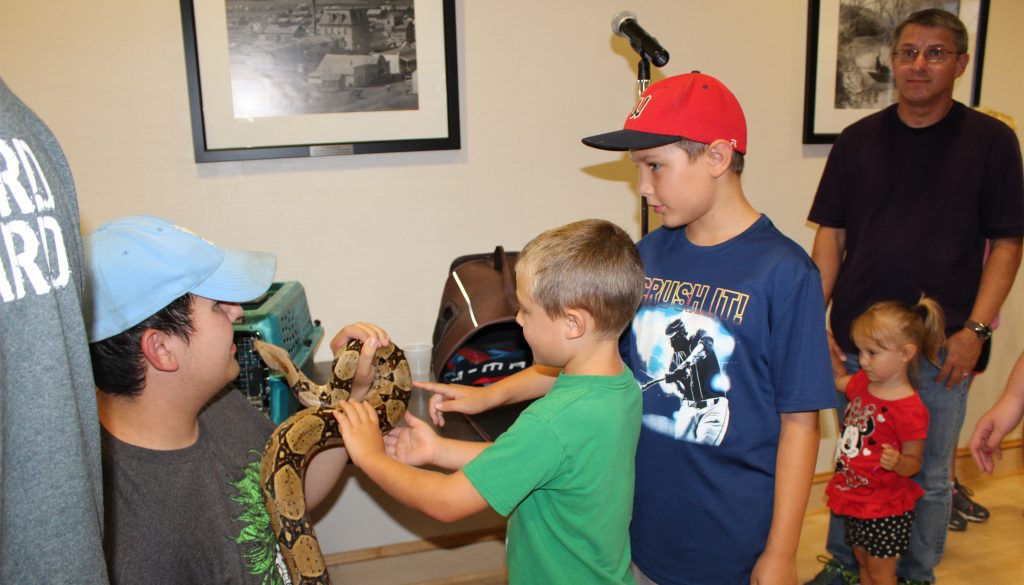By CRISTINA JANNEY
Hays Post
There are probably days designated for just about everything, but Monday was a day honoring all creatures that slither and hiss.
More than 130 people crowded into the Schmidt Gallery at the Hays Public Library Monday night to see and touch snakes as the library honored Snake Day.
Guests were greeted by three species of native snakes from the Sternberg Museum collection and a boa from a private collection.
The native species were Buddy, a plains rat snake; Whipper Snapper, a coach whip; and Cooper, a speckled king snake.
Buddy is a rat eater and is a constrictor. Whipper snapper thrashes or drowns its pray. Cooper eats other snakes including rattlesnakes and is a constrictor.
The last snake was a non-native species, a 6-foot Colombia red tail boa constrictor named Zeus,
The species is native to South America, including the countries of Colombia, Ecuador, Peru and Venezuela.
“Zeus is a lot stronger than Buddy or Whipper Snapper,” Jackson Stanton, museum volunteer and snake owner, said. “If he would wrap around my hand, I would not be able to physically pull him off by myself, and he has done that a couple times. My fingers were purple by the end of it.
“They are incredibly strong snakes. They are almost 100 percent muscle.”
Zeus, who weighs 16 pounds, eats rats, rabbits, guinea pigs and squirrels.
The pattern that goes through Zeus’ neck also goes through his eye, which helps him blend into his native habitat.
“Most of the snakes we have had out eat mice and rats, so if we got rid of all the snakes, imagine if they were all gone off the face of the earth,” Ian Trevethan, Sternberg outreach coordinator, said. “Think about this, an average field mouse reproduces and has babies every three weeks, and then those babies are ready have babies. Then three weeks later you have a whole bunch more mice If nothing was eating the mice like snakes, we would be up to our ears in mice and mouse poop and disease would be bad.
“We should thank the snakes around us for that because they do a really, really important job in nature.”
Unfortunately, when rattlesnakes or other venomous snakes come in contact with people, it can result in some unfortunate circumstances.
Stanton said, “Rattlesnakes don’t want to bite people. It is hard to make that venom. They don’t want to bite us. They want to get away from us as a fast as they can. Snakes aren’t bad. They aren’t inherently bad. Snakes are terrified of humans. We are giant monsters to them. They don’t want to bite us. They don’t want to have any interaction with us whatsoever.”
If you see a snake in the wild, it is best to leave it alone, the speakers said.
“As long as you don’t bother them, they are pretty chill. I suggest you stay a distance a way and let them go on their merry way,” Rachel Unruh, Sternberg student employee, said.
There are four types of venomous snakes in Kansas the prairie rattlesnake, timber rattlesnake, copperhead and massasauga rattlesnake.
The prairie rattlesnakes and massasauga rattlesnakes can be found in the Hays area.
Poisonous snakes can be easily misidentified, which can lead to dangerous bites. Juvenile rattlesnakes can be easily confused for the nonvenomous hog nose snakes. Children try to pick up the snakes and get bitten.
“The moral of this story is if you see a snake, even if you think it is a harmless hog nose, leave it alone, just in case it is a baby rattlesnake or some other type of snake,” Trevethan said.
Baby rattlesnakes can’t control their venom, so you may receive more venom from a baby than an adult.
The snakes that were shown at the library all have been handled and fed by humans and are used to human contact, but a wild snake might play dead, try to mimic a rattlesnake and shake its tail or it might bite.
Children also made crafts and were offer snacks by the library staff.
